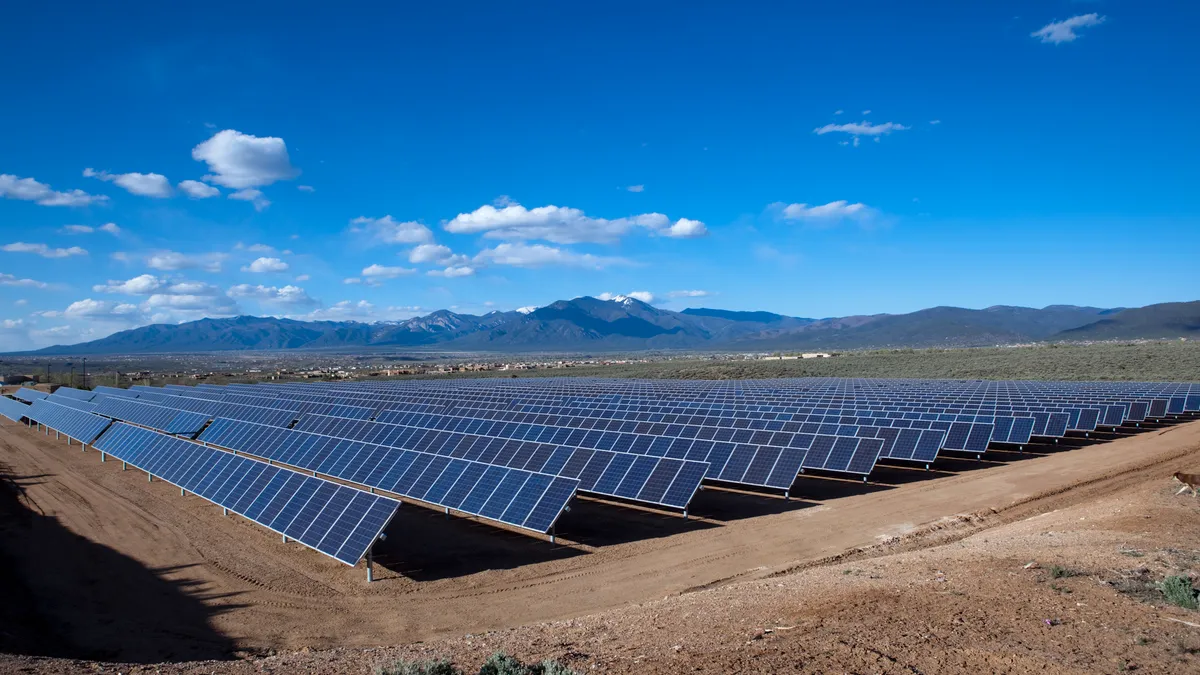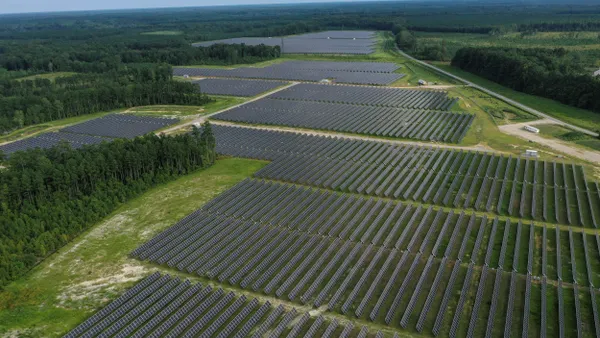In its effort to focus on its regulated utilities, American Electric Power aims to sell its solar business in New Mexico, which it co-owns with PNM Resources, as soon as this quarter, the utility company said last week.
AEP also expects it will finish the sale process for AEP Energy and AEP Onsite Partners in the first half of next year, the company said Nov. 2. The retail and distributed resources subsidiaries have a $244 million and $353 million net book value, respectively, according to the Columbus, Ohio-based company’s third quarter report filed with the U.S. Securities and Exchange Commission.
The utility company also expects to soon launch a sale process for its stakes in two transmission companies — Pioneer Transmission and Prairie Wind Transmission — and expects to decide by the end of this year whether to sell Transource Energy, Julie Sloat, AEP chair, president and CEO, said during an earnings conference call.
AEP's portion of rate base associated with Pioneer Transmission and Prairie Wind Transmission was $107 million, according to Sloat.
AEP in August sold its 1,365-MW unregulated renewable energy portfolio to IRG Acquisition Holdings, a partnership owned by Invenergy, pension fund Caisse de dépôt et placement du Québec, and funds managed by Blackstone Infrastructure.
“While our industry continues to transform amid this dynamic environment characterized by more extreme weather, rising interest rates and supply chain constraints, AEP has continued to adapt,” Sloat said.
While AEP is selling non-core assets, the company’s utilities are building out their renewable energy fleet.
State utility commissions have approved plans by AEP utilities to buy about 2,811 MW of owned renewable generation facilities, totaling about $6.6 billion, in addition to 557 MW of renewable energy power purchase agreements, according to the company’s SEC report.
AEP’s utilities have pending solicitations seeking 3,750 MW of wind and solar capacity. Indiana Michigan Power is seeking 1,650 MW, Kentucky Power is asking for 1,300 MW and Appalachian Power wants 800 MW, according to AEP.
Taking advantage of tax credit transfer provisions in the Inflation Reduction Act, AEP — on behalf of Public Service Co. of Oklahoma and Southwestern Electric Power Co. — agreed to sell about $80 million in production tax credits, the company said. AEP said it expects to explore additional tax credit transfers.
Meanwhile, AEP and the SEC are in talks about a possible resolution of the federal agency’s investigation and potential claims related to Ohio’s H.B. 6 legislative bribery scandal, AEP said in its quarterly report. The company’s management does not believe AEP was involved in wrongful conduct in connection with the passage of HB 6, the company said.
AEP management doesn’t believe results from the SEC investigation will have a significant effect on the company’s operations, cash flows or financial condition, according to the filing.
AEP is planning for interest rates to remain higher for longer than initially expected, according to Charles Zebula, AEP chief financial officer. “We've clearly been able to overcome those headwinds this year, but they will persist,” he said. “So our plan is to sensibly finance this company [and] continue to remain committed to mid-grade investment-grade credit.”
AEP’s interest expense grew by $28 million in the third quarter and by $88 million in the first nine months this year, mainly due to higher long-term debt balances and interest rates, the company said.
AEP’s weather-normalized retail sales grew 2.1% from the year-ago period. Weather-normalized residential sales increased 0.6%, commercial sales jumped 7.5% and industrial sales fell 1.1% compared to the year-ago period, according to an earnings presentation.
Load growth in the commercial sector was driven by data centers in Ohio, Texas and Indiana, while the drop in industrial electricity use was caused by a pullback by chemical, plastic and tire producers as well as downstream participants in the energy industry, according to Zebula.
“This reflects some of the softness in manufacturing nationally as producers have slowed activity in response to uncertainty around the economic outlook,” he said.
AEP expects industrial load will grow in the months ahead because recent inflation and jobs data have reduced the probability of a recession in the next year, Zebula said.















